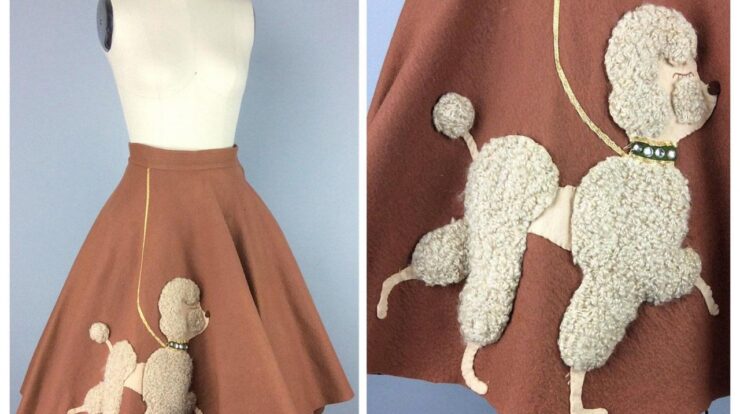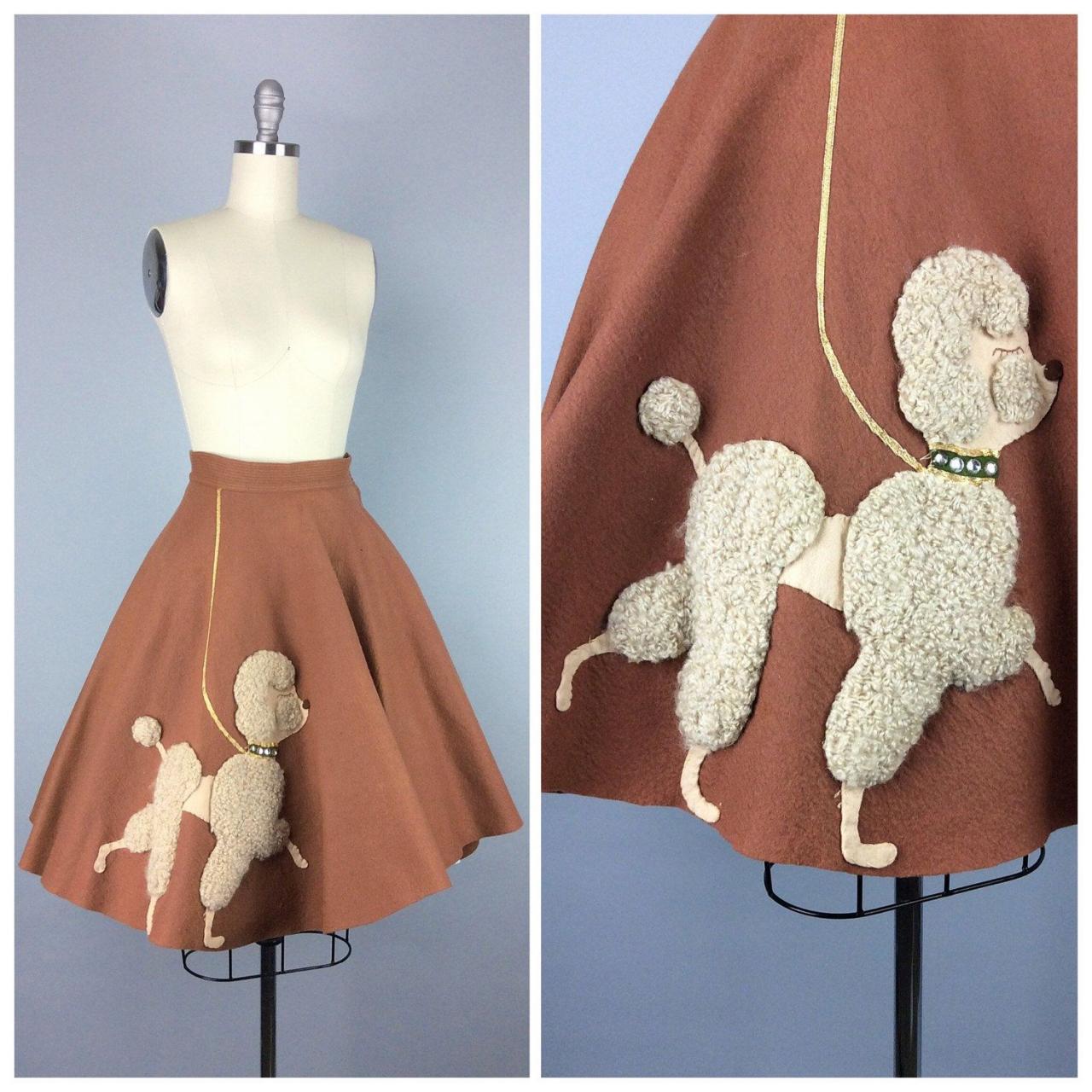
Poodle skirts, a symbol of the 1950s, have made a remarkable comeback in recent years, captivating fashion enthusiasts with their playful and nostalgic charm. This article delves into the captivating history, design characteristics, cultural significance, contemporary interpretations, and socioeconomic impact of the poodle skirt, exploring its enduring appeal in the fashion landscape.
The poodle skirt emerged in the post-World War II era, reflecting the optimism and exuberance of the time. Its distinctive design, featuring a full, flared skirt adorned with poodle appliqués, became an instant hit among teenage girls.
Origins and History
The poodle skirt emerged as a fashion staple in the mid-1950s, becoming an iconic symbol of the era’s youth culture. Its roots can be traced back to the early 20th century, with variations of full, circular skirts worn by women for dancing and other activities.
The poodle skirt’s unique design, featuring an appliqued or embroidered poodle, was inspired by the popular poodle dogs of the time. The poodle’s playful and whimsical nature resonated with teenagers, who embraced the skirt as a symbol of their carefree and rebellious spirit.
Design Characteristics

The poodle skirt is characterized by its full, circular silhouette, reaching below the knee. It is typically made from cotton or other lightweight fabrics, providing a comfortable and airy feel.
The defining feature of the poodle skirt is the large poodle appliqué or embroidery, often adorned with colorful sequins or beads. The poodle’s playful posture, with its tail in the air and a wide smile, became synonymous with the skirt’s cheerful and exuberant style.
Cultural Significance
The poodle skirt became a symbol of teenage rebellion and rock ‘n’ roll culture in the 1950s. It was associated with the greaser subculture, known for their love of rock ‘n’ roll music and rebellious attitudes.
The skirt’s popularity extended beyond the greaser subculture, becoming a staple of teenage fashion. It was worn by girls from all walks of life, representing a shared sense of independence and youthful exuberance.
Contemporary Interpretations: Poodle Skirt
The poodle skirt has experienced a resurgence in popularity in recent years, with modern designers reinterpreting the classic design. Contemporary versions often incorporate updated fabrics, such as silk or lace, and embellishments, such as beading or embroidery.
The enduring appeal of the poodle skirt lies in its playful and nostalgic nature. It evokes a sense of youthful rebellion and carefree spirit, making it a timeless fashion icon.
Socioeconomic Impact
The poodle skirt had a significant impact on the textile and fashion industries. Its popularity led to a surge in the production of cotton and other fabrics used in its construction.
The skirt’s iconic status also influenced consumer trends, shaping the demand for other poodle-themed accessories and merchandise. It played a role in the growth of the teenage fashion market, catering to the unique style preferences of this emerging consumer group.
Final Review

Today, the poodle skirt continues to inspire designers and fashion enthusiasts alike, with modern interpretations showcasing a blend of retro charm and contemporary style. Its enduring appeal lies in its ability to evoke a sense of nostalgia and playfulness, making it a timeless fashion icon that transcends generations.
FAQ Compilation
What is the origin of the poodle skirt?
The poodle skirt emerged in the mid-1950s as a symbol of teenage rebellion and individuality.
Why were poodle skirts so popular in the 1950s?
Poodle skirts represented the carefree and optimistic spirit of the post-World War II era, appealing to teenage girls who sought to express their unique style.
Are poodle skirts still popular today?
Yes, poodle skirts have experienced a resurgence in popularity in recent years, with modern interpretations incorporating contemporary fashion elements.





